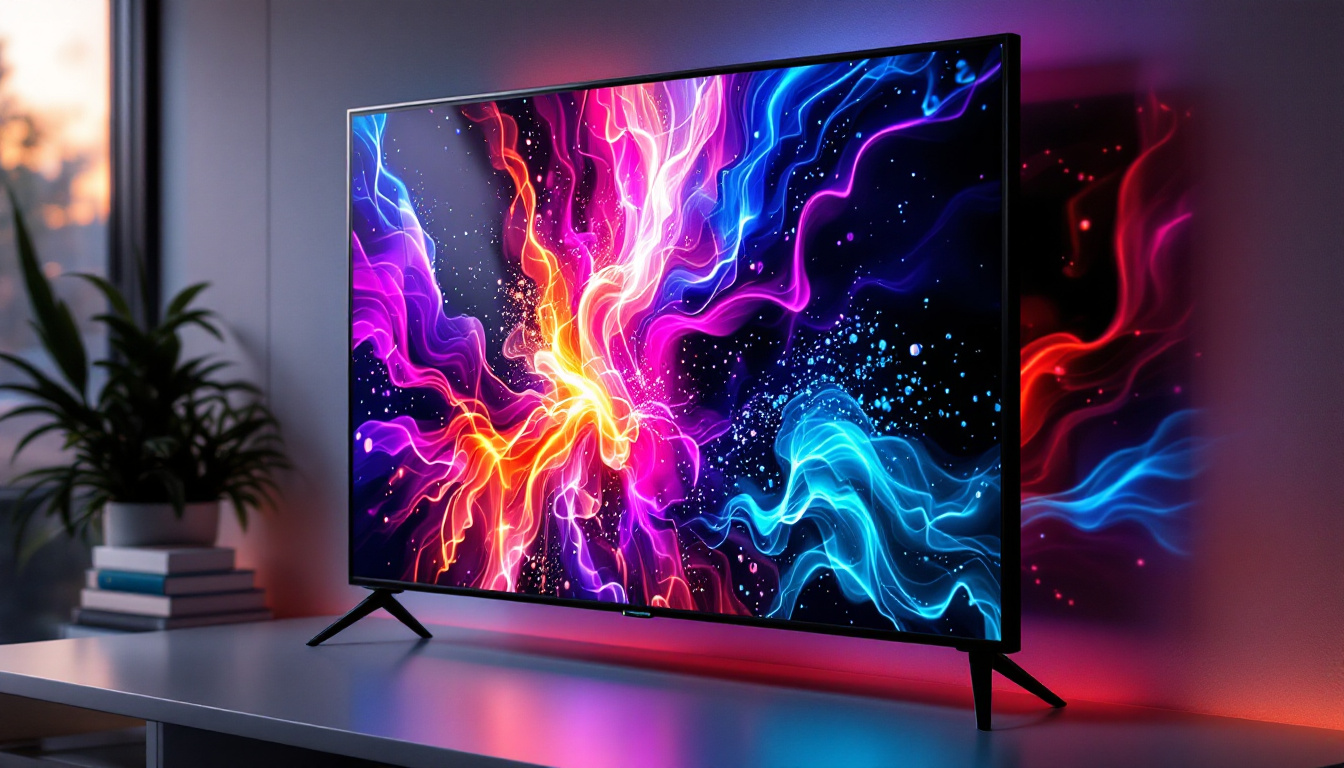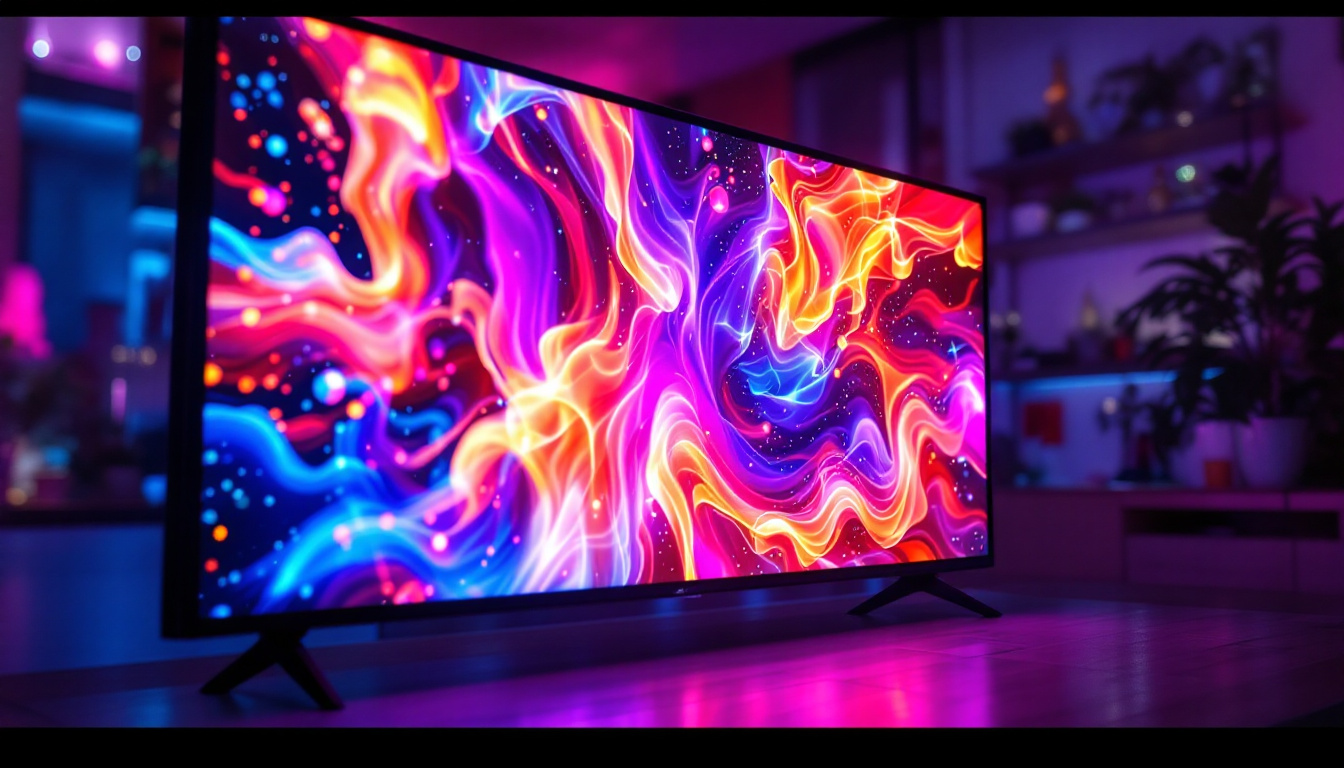How Does A LCD Screen Work: LED Display Explained
In the world of modern technology, LCD (Liquid Crystal Display) screens have become ubiquitous, gracing everything from televisions to smartphones. Understanding how these screens function is essential for anyone interested in technology, whether for personal knowledge or professional purposes. This article delves into the intricacies of LCD screens, focusing on their operation, components, and the role of LED backlighting.
Understanding LCD Technology
LCD technology operates on the principle of manipulating light to create images. Unlike traditional cathode-ray tube (CRT) displays, which rely on electron beams, LCDs utilize liquid crystals sandwiched between two layers of glass or plastic. These crystals can be aligned in such a way that they either block or allow light to pass through, thus forming the images we see on the screen.
The Basics of Liquid Crystals
Liquid crystals are unique substances that exhibit properties of both liquids and solids. In their natural state, they can flow like a liquid but have a degree of order like a solid. This characteristic is crucial for their function in LCDs. When an electric current is applied, the orientation of the liquid crystals changes, affecting their ability to transmit light.
The manipulation of these crystals occurs in response to electrical signals, which are generated by the display’s control circuitry. This allows for the precise control of light and color, enabling the display to render images accurately. The response time of liquid crystals is a critical factor, as it determines how quickly the display can refresh and show new images, making it essential for applications ranging from television broadcasts to fast-paced video games.
Components of an LCD Screen
An LCD screen consists of several key components that work together to produce images. These include:
- Liquid Crystal Layer: The heart of the LCD, where the crystals are manipulated to control light passage.
- Polarizers: Two polarizing filters are placed at the front and back of the liquid crystal layer, allowing light to enter and exit the display.
- Backlight: Since LCDs do not emit light on their own, a backlight is necessary to illuminate the screen.
Each of these components plays a crucial role in the overall functionality of the display, working in harmony to produce vibrant images. Additionally, the backlight itself can be made from various technologies, such as LED (Light Emitting Diode) or CCFL (Cold Cathode Fluorescent Lamp), each offering different brightness levels and energy efficiencies. The choice of backlighting significantly impacts the display’s color accuracy and contrast ratios, which are vital for achieving the desired visual experience.
Furthermore, advancements in LCD technology have led to the development of various types of displays, including IPS (In-Plane Switching) and TN (Twisted Nematic) panels. IPS panels are known for their superior color reproduction and wider viewing angles, making them ideal for graphic design and professional applications. On the other hand, TN panels are often favored for gaming due to their faster response times, albeit with some trade-offs in color accuracy and viewing angles. Understanding these differences is essential for consumers looking to select the right display for their needs.
The Role of Backlighting in LCDs
One of the defining features of LCD technology is its reliance on backlighting. Unlike OLED (Organic Light Emitting Diode) displays, which can emit their own light, LCDs depend on an external light source. This is where LED (Light Emitting Diode) technology comes into play. The choice of backlighting can significantly influence the overall performance and visual quality of the display, affecting everything from color reproduction to energy consumption.
Types of Backlighting
There are primarily two types of backlighting used in LCD screens: edge-lit and direct-lit. Each type has its advantages and disadvantages, making them suitable for different applications and user preferences.
- Edge-Lit Backlighting: In this configuration, LEDs are placed along the edges of the screen. Light is then diffused across the display using a light guide plate. This design allows for thinner screens but can result in uneven brightness. Edge-lit displays are often favored in ultra-slim televisions and portable devices where space is at a premium.
- Direct-Lit Backlighting: Here, LEDs are placed directly behind the liquid crystal layer. This setup provides more uniform brightness and better contrast but typically results in a thicker display. Direct-lit backlighting is commonly used in larger screens, such as computer monitors and high-end televisions, where picture quality is paramount.
Benefits of LED Backlighting
LED backlighting offers several advantages over traditional fluorescent backlighting, including:
- Energy Efficiency: LEDs consume less power, making them more environmentally friendly and cost-effective. This efficiency not only reduces electricity bills but also contributes to a lower carbon footprint, appealing to eco-conscious consumers.
- Improved Color Accuracy: LED backlights can produce a wider color gamut, resulting in more vibrant and accurate colors. This capability is particularly beneficial for professionals in graphic design and video editing, where precise color representation is crucial.
- Longer Lifespan: LEDs have a longer operational life compared to traditional bulbs, reducing the need for frequent replacements. This longevity translates into lower maintenance costs and less electronic waste, further enhancing their appeal in both consumer and commercial markets.
Moreover, advancements in LED technology have led to the development of local dimming features in direct-lit displays. This allows certain areas of the screen to dim or brighten independently, enhancing contrast ratios and providing deeper blacks. Such features are especially beneficial for watching movies or playing video games, where dynamic lighting can significantly impact the viewing experience. Additionally, the integration of smart technologies with LED backlighting systems enables features like adaptive brightness, which adjusts the screen’s luminosity based on ambient light conditions, further optimizing visual comfort and energy consumption.
How LCD Screens Create Images
The process of image creation in an LCD screen involves several steps, starting from the input signal to the final image displayed. Understanding this process provides insight into the technology behind the screens.
Signal Processing
When a video signal is sent to the LCD screen, it is first processed by the display’s control circuitry. This circuitry converts the incoming signal into a format that can be understood by the liquid crystal layer. Each pixel on the screen is controlled individually, allowing for precise image rendering.
The control circuitry determines the amount of light that each pixel should allow through, based on the signal it receives. This modulation of light is what creates the images, with varying levels of brightness and color.
Color Creation
Color in LCD screens is achieved through a combination of red, green, and blue (RGB) subpixels. Each pixel is divided into three subpixels, each corresponding to one of the primary colors. By adjusting the intensity of each subpixel, a wide range of colors can be produced.
The combination of these RGB subpixels allows for the creation of millions of different colors, enabling the display of rich and vibrant images. This color mixing is fundamental to the visual experience provided by LCD screens.
Advantages of LCD Screens
LCD screens have become the preferred choice for many applications due to their numerous advantages. Understanding these benefits can help consumers make informed decisions when purchasing display technology.
High Resolution and Clarity
One of the most significant advantages of LCD technology is its ability to achieve high resolutions. Modern LCD screens can display images in 4K and even 8K resolutions, providing exceptional clarity and detail. This makes them ideal for applications such as gaming, graphic design, and professional video editing.
Thin and Lightweight Design
LCD screens are inherently thinner and lighter than their CRT counterparts. This sleek design allows for more versatile applications, including portable devices like laptops and tablets. The reduced weight also makes them easier to mount on walls or transport, further enhancing their usability.
Disadvantages of LCD Screens
Despite their many advantages, LCD screens are not without their drawbacks. Understanding these limitations is essential for a comprehensive view of the technology.
Limited Viewing Angles
One of the most notable disadvantages of LCD screens is their limited viewing angles. When viewed from extreme angles, the colors and brightness can shift, leading to a less than optimal viewing experience. This limitation is particularly noticeable in lower-quality LCDs, where the viewing angle can be as narrow as 160 degrees.
Response Time and Motion Blur
Another issue associated with LCD technology is response time. While advancements have been made, some LCD screens still struggle with fast-moving images, leading to motion blur. This can be particularly problematic in gaming or action-packed video content, where quick response times are crucial for an enjoyable experience.
The Future of LCD Technology
As technology continues to evolve, so does LCD technology. Innovations are constantly being developed to enhance performance and address existing limitations.
Quantum Dot Technology
One of the most promising advancements in LCD technology is the incorporation of quantum dot technology. Quantum dots are tiny semiconductor particles that can emit specific colors of light when illuminated. By integrating quantum dots into LCD screens, manufacturers can achieve improved color accuracy and brightness.
Mini-LED and Micro-LED Technologies
Another area of innovation is the development of mini-LED and micro-LED technologies. These advancements involve using smaller LEDs for backlighting, allowing for more precise control of brightness and contrast. This can lead to deeper blacks and brighter highlights, significantly enhancing the overall picture quality.
Conclusion
LCD screens have revolutionized the way we interact with technology, providing clear, vibrant images across a wide range of devices. Understanding how these screens work, from the manipulation of liquid crystals to the role of LED backlighting, offers valuable insights into their functionality and advantages.
While LCD technology has its limitations, ongoing advancements promise to address these challenges, ensuring that LCD screens remain a vital part of our technological landscape for years to come. Whether for personal use or professional applications, the knowledge of how LCD screens operate can enhance appreciation for the technology that has become an integral part of daily life.
Explore Cutting-Edge LED Displays with LumenMatrix
As you’ve discovered the intricate workings of LCD screens and the pivotal role of LED backlighting, take the next step in visual innovation with LumenMatrix. Our extensive range of LED display solutions, from Indoor and Outdoor LED Walls to specialized options like Vehicle and Sports Displays, are designed to captivate and engage. Embrace the future of visual communication with LumenMatrix and let us help you make a powerful statement. Check out LumenMatrix LED Display Solutions today and experience the pinnacle of display technology.































